From today’s perspective, vacuum tubes are pretty low tech. But for a while they were the pinnacle of high tech, and heavy research followed the promise shown by early vacuum tubes in transmission and computing. Indeed, as time progressed, tubes became very sophisticated and difficult to manufacture. After all, they were as ubiquitous as ICs are today, so it is hardly surprising that they got a lot of R&D.
Prior to 1938, for example, tubes were built as if they were light bulbs. As the demands on them grew more sophisticated, the traditional light bulb design wasn’t sufficient. For one, the wire leads’ parasitic inductance and capacitance would limit the use of the tube in high-frequency applications. Even the time it took electrons to get from one part of the tube to another was a bottleneck.
There were several attempts to speed tubes up, including RCA’s acorn tubes, lighthouse tubes, and Telefunken’s Stahlröhre designs. These generally tried to keep leads short and tubes small. The Philips company started attacking the problem in 1934 because they were anticipating demand for television receivers that would operate at higher frequencies.
Dr. Hans Jonker was the primary developer of the proposed solution and published his design in an internal technical note describing an all-glass tube that was easier to manufacture than other solutions. Now all they needed was an actual application. While they initially thought the killer app would be television, the E50 would end up helping the Allies win the war.
Television
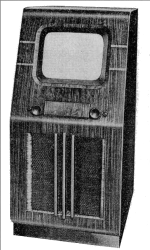 In Britain, there was a single television transmitter at Alexandra Palace — the start of what would become the BBC. This was not only the first public television service but also the first fully electronic television system. Pye Ltd. — a company eventually bought by Philips — made receivers that were surprisingly successful. The sound was at 41.5 Mhz and the visual was at 45 MHz — high frequencies for those days.
In Britain, there was a single television transmitter at Alexandra Palace — the start of what would become the BBC. This was not only the first public television service but also the first fully electronic television system. Pye Ltd. — a company eventually bought by Philips — made receivers that were surprisingly successful. The sound was at 41.5 Mhz and the visual was at 45 MHz — high frequencies for those days.
Spurred by the demand, Pye decided that a set with more range would create a broader market for receivers. The problem was finding a tube that could handle the 45 MHz frequency in their tuned radio frequency (TRF) design.
Pye wrote out the specifications for what they needed, but couldn’t get them made reliably and cheaply. They turned to Philips who took Jonker’s ideas and added some items needed for this application, producing the EF50 — a pentode. The resulting TV set (see page 199) had a range of about five times the older sets.
Construction
Old tubes used a difficult process called pinching to seal the end of a glass tube with the leads running through it. The pinch formed an inverted V shape where the bakelite base of the tube fit the wide part of the V and the wires within entered the tube through the point of the V.
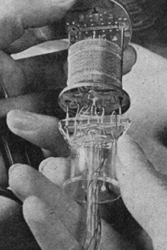 This had several problems. As more wires had to pass through the pinch, they had to get closer together. That increased stray capacitance. Worse, the distance from the bottom of the V to the top of the V meant wires had to be relatively long which added inductance. Finally, the size of the V — often half the total length of the tube — was preventing tubes from getting smaller, hindering the development of portable equipment.
This had several problems. As more wires had to pass through the pinch, they had to get closer together. That increased stray capacitance. Worse, the distance from the bottom of the V to the top of the V meant wires had to be relatively long which added inductance. Finally, the size of the V — often half the total length of the tube — was preventing tubes from getting smaller, hindering the development of portable equipment.
One way to solve this was to build the tubes from metal instead of glass, with some connections going through the top of the tube. However, these tubes were expensive to manufacture in quantity and designers did not like having to wire to the top of the tube. The Stahlröhre bucked the trend, putting the tube components in horizontally to decrease wiring to the base and using no top connections. However, again, the cost to manufacture was high. The 1934 acorn tube was all glass and used two parts sealed together with short leads but were also known to be expensive to produce.
Philips, Pye, and the War
When the Dutch military first asked Philips for tubes around 1918, they declined; Gerard Philips though radio had little practical value. It would be 1923 before Philips decided to use its expertise in light bulbs to produce radio tubes. By 1938, Jonker’s work was circulating and in 1939 there was even an article about it in Wireless Engineer.
By the time Pye came looking for high-frequency tubes, Philips was ready due to the earlier work. The Pye receiver used six tubes and required some tweaking, including the addition of a metal shield.
Meanwhile, there was war. The Battle of Britain was in 1940 and the military was busy in 1939 working on RADAR that also operated at high frequencies. This RADAR — and the command and control strategies used with it — would be key to winning the upcoming battle. The team working on airborne RADAR apparently only had one receiver good enough to get results. Then they received a tip that Pye had an excellent receiver that worked in the same frequency range. This became the basis for Britain’s RADAR sets through the war. About 60% of all Pye TV IF strips wound up in British RADAR sets.
The big problem was that by 1940 the Netherlands was in German hands. The production line needed to be moved to Britain, and when the HMS Windsor took the escaping Dutch government to England, the Philips family was also onboard with the diamond dies needed to produce the fine tungsten wires used in the EF50 tube.
After the war, the EF50 would find a home in many oscilloscopes and radio receivers. This was both because of its superior frequency ability and the availability of war surplus. Others would also produce the tube including Marconi-Osram (as the Z90) and Cossor (63SPT). Mullard produced the tube using the original Phillips equipment and both Rogers and Sylvania also produced a version.
Nuvistors
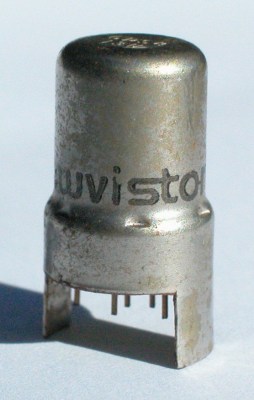 This type of tube would be the king of the hill for RF work until 1959. That’s the year RCA introduced the nuvistor — a metal and ceramic tube assembled in a vacuum chamber. These were nearly as tiny as a transistor, low noise, and had excellent performance at radio frequencies. These were found in a lot of gear all the way until the early 1970s including TV tuners, oscilloscopes, and tape recorders.
This type of tube would be the king of the hill for RF work until 1959. That’s the year RCA introduced the nuvistor — a metal and ceramic tube assembled in a vacuum chamber. These were nearly as tiny as a transistor, low noise, and had excellent performance at radio frequencies. These were found in a lot of gear all the way until the early 1970s including TV tuners, oscilloscopes, and tape recorders.
More Details
There’s a very long and very well-researched history of everyone and everything related to the EF50 if you want to really dig into the details. There’s even a translation of part of the original internal report about it. You can also find similar information and a lot of unique pictures at [Keith Thrower’s] site.
If you like the sound of an old tube radio, the medium wave receiver in the video below uses some EF50s and it sounds great. Want more tube history? Or perhaps you’d rather make your own. Or you can watch how they made similar tubes back in the day.

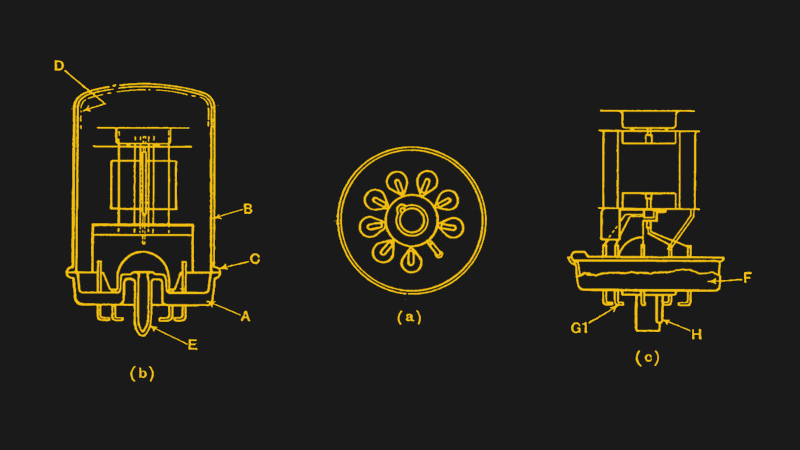
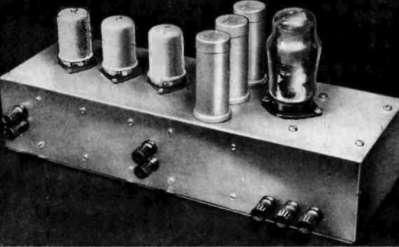














My home town was bombarded several times by the allied forces because there were Philips factories producing tubes and other radio parts for the Germans. The buildings were only lightly damaged and are still there (though they’re no longer in use as factories) but a large number of houses and other buildings got wiped off the map.
To find out more, Google for “operation oyster”.
(And keep in mind, footage from those days was war propaganda. The bombing wasn’t nearly as successful as they want you to believe)
Sorry about that. We promise not to do it again, even after Brexit!
I recognise the buildings. For many years I lived practically next to these.
Now I live in a different city. But my current neighbourhood was bombed by the RAF once as well: https://en.wikipedia.org/wiki/Bombing_of_the_Bezuidenhout
You can still buy nuvista high-end audio gear https://www.musicalfidelity.com/products/nu-vista, SMD and valves on the same PCB (sadly no internal pictures).
Actually internal pictures readily available with a quick internet search! Oh for an Edit button.
You can still buy nuvista audio gear https://www.musicalfidelity.com/products/nu-vista. They say SMD and valves on the same PCB, but sadly no internal photos.
Tubes, as an ancient form of “ship in a bottle”.
The post seems to skip the EF50 in the “Construction” section. How did they solve the problem and make it affordable?
Needs more antique elctronics porn.
I am not sure they “solved” the problem, as General Electric and Sylvania went to button type bases (no pinch, as pointed out in the article) several year previous to the introduction of the EF50. Early US radars used acorns in their IF strips before going to the 6AC7 in their IF strips.
It took much effort to get the British to adopt a lot of the superior US designs during World War 2. Lend lease helped, of course.
EF50? Meh…
The solution was Jonker’s work (covered above):
…internal technical note describing an all-glass tube…
As others pointed out, though, there were better solutions both before and after, although they were harder to make and thus more expensive.
^ This. Read the entire article looking for the explanation of how they actually solved the problem and found nothing. No technical deets whatsoever. FFS guys.
There is one small detail you forgot to mention. Vacuum tubes research was pushed until the middle of the 90s by Soviet Russians engineer. They built subminiature tubes for their military industry. Even today the critical emergency backup systems for their airplanes is based on this tech.
Back in the ‘70s we were astonished when a defecting Russian pilots state-of-the-art MIG had vacuum tube electronics until we realized that they would survive an EMP in the event in of nuclear attack. And on into the ‘90s Russia was about the only source for vacuum tubes/valves for hobbyists and audiophiles.
The first TV was Public TV and suffered from ghosts but no adverts. The ghosting was a distance to a big building or landform and displayed on these home “RADAR” sets and that led into shorter wave and airborne RADAR.
Ally Pally wasn’t silent during the war. They with hand on the VFO dial spoofed the German rediolocation system that caused sheep in countryside to get bombed instead of towns. This story is is worthy of a HaD article on electronic countermeasures history.
Do you mean this article?
https://hackaday.com/2018/04/17/beeping-the-enemy-into-submission/
There’s an article from last year:
https://hackaday.com/2018/04/17/beeping-the-enemy-into-submission/
_The Wizard War_ by R V Jones covers the “Battle of the Beams” quite well…and much more. A worthwhile read if you’re interested in early ECM.
I recall an interesting magazine article (QST perhaps), describing the transition from tubes to transistors. The main point was that if the transistor had been invented just a few years later, the resulting history of electronics would be very different.
Wish I could find that article again. It pointed out that around the time that R&D was making that transition, vacuum tube research was really on a roll. More and more features and functionality were being built into smaller and smaller tubes, And that a lot of that research went down the tubes (bad pun) when everyone saw a solid state future.
I remember waiting for the radio to warm up, and then solid state was instant, and now we have to wait for everything to boot up.
Jim
Vacuum tubes may make a comeback courtesy of some of the same technology that made them obsolete.
It’s quite unlikely that any tube design could be fitted in an SOT-363 case. I can not understand, why anyone could cry after the tubes and like the need for high voltage and wasted heater power. A tube has of course it’s merits: for extremely high powers and/or frequencies.
And resistance to damage from EM that makes them useful for nuke controls, and also for Jazz.
Mostly Jazz.
Jazz in terrorism.
Thanks, I repair valve amplifiers
The BBC pre-dates TV. It started as a radio service back in the early 1920’s and was initially called the British Broadcasting Company, before being renamed to the British Broadcasting Corporation in 1927.
Pre-war they trialed BOTH the electronic and mechanical TV systems (1 week at a time for each IIRC), before deciding in favour of the electronic system, just in time for the war, which halted things. Anyone who had bought a mechanical receiver was SOL.
https://youtu.be/f99PcP0aFNE
Enjoyable read. Well written. Thank You.
Fascinating. Never knew how much technology went into these things.
Incidentally UK Customs are idiots for banning tubes, seriously?! Apparently its the barium or something like that, despite the quantity being very small indeed. I can’t even get one measly RCA tube for my antique grid dip meter.
It was an april fools joke, ya daftie.
https://www.gearnews.com/eu-ban-vacuum-tubes-1st-january-2019/
The UK has not banned valves, and nor has the EU.
How come folks have had them confiscated then?
The usual customs crap? Mislabelling or misvaluing by the sender? I had a box of fifty obscure-model tubes shipped a couple months back, labelled as vacuum tubes, from Ukraine, and they made it fine. If the UK banned tubes, Vox, Marshall, Blackstar would have it all over their websites and Anderton’s would be rapidly going bankrupt, but…
https://www.andertons.co.uk/guitar-dept/electric-guitar-amps/valve-amps/valve-combos/fender-blues-junior-iv-fsr-seafoam
They have stock, so this ban is fictional.
Misvaluing is possible. I have heard that you can’t send isolated CCFL tubes unless they are sent a certain way ie in a postal tube with lots of padding in a plastic bag.
CCFLs in screens may be OK but would have to check this one as have about 390 unsorted ones here.